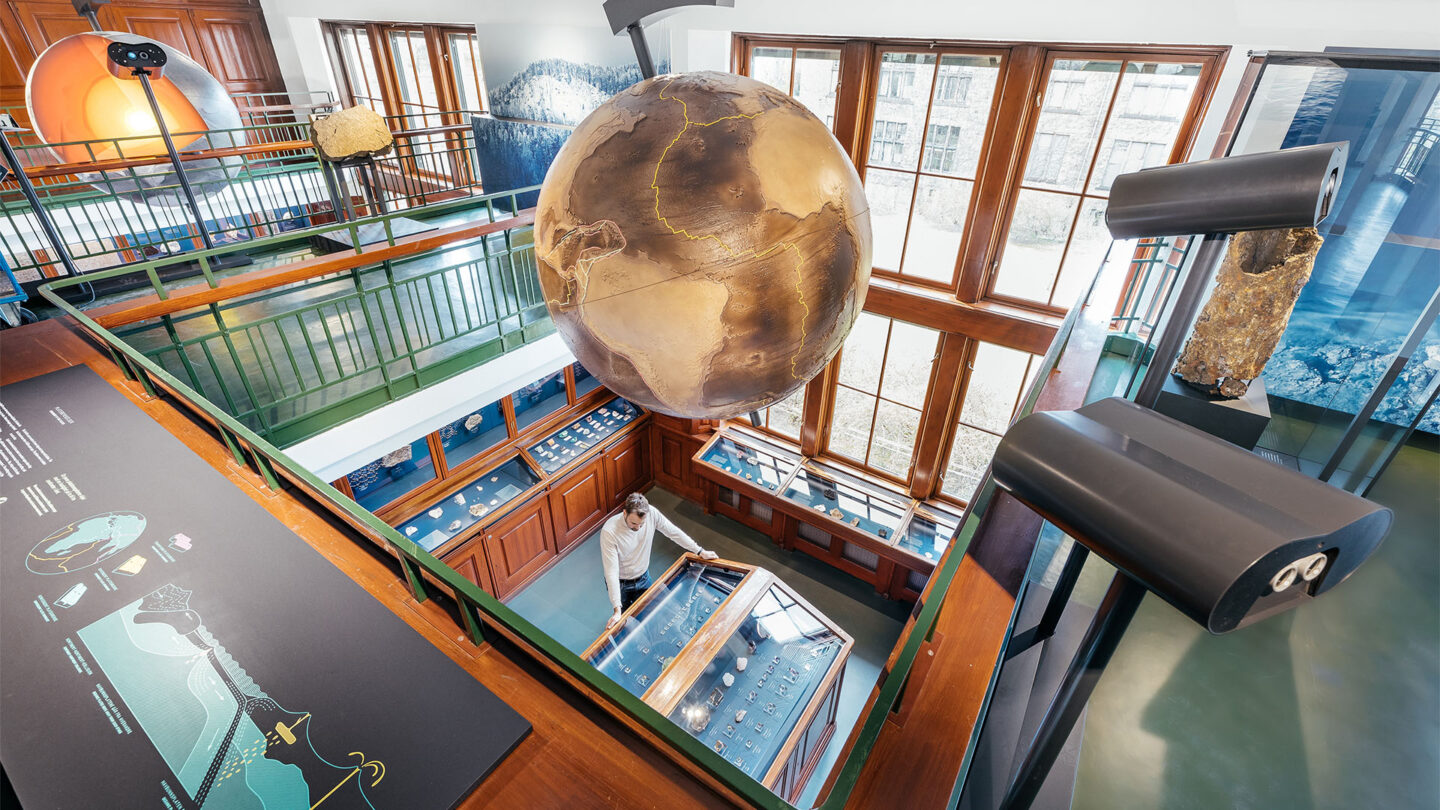Natural History Museum Oslo
The Natural History Museum in Oslo has opened a new geological exhibition covering over 2000 square meters. On four floors, explaining Earth’s history and life’s evolution. The exhibition’s lead designer, Atelier Bruckner, teamed up with Gagarin to develop unique, innovative exhibits with modern storytelling in the grand old historical building housing the museum.
Agency
Gagarin
Practice Area
Client
Natural History Museum Oslo
Industry


Nine physical globes have AR binoculars pointed at them in which the visitor can see explicit content
Marcus Sies

Ida
Marcus Sies
Project Overview
The Gagarin team delivered 24 interactive installations we designed in close collaboration with museum scientists and lecturers with expertise in every theme. The main challenge was designing modern, playful interactive exhibits on complex phenomena in an old, protected historical building.
List of installations:
CAMBRIAN EXPLOSION A horizontal screen and a button where visitors can trigger the Cambrian explosion and see how all life stems from it
. MORGANUCODON A touch screen allows visitors to spin a 3D tooth of a MORGANUCODON to learn about this prehistoric creature.
BIG IMPACT As a visitor moves from one gallery to another, he is surprised by a meteor impact sound installation. IDA On a screen, the visitor can “excavate” the primate Ida by rubbing the screen.
KONGSBERG & LANGESUND A model of the Samuels Grube has three screens hidden in it, displaying mining in 1716, 1890, and 1912.
DRILL CORE Interactive screens slide along a 7,55m long replica of a drill core on either side. The screens scan the drill core and teach the visitor what they are looking at and how we use those values to determine ecosystems of past periods.
FORMATION OF OIL & GEOLOGY OF NORWAY A circular table, the spinning of which can teach visitors about the geological history of Norway: how it changed from 500 million years ago to today.
JURASSIC OCEAN ON SVALBARD – BRITNEY A touch screen that allows visitors to spin the skull of the plesiosaur Britney with additional pieces of information.
HOW WAS THE SOLAR SYSTEM FORMED? Turning a knob on a balustrade allows the visitor to spin through the event that created the Earth and the Moon, demonstrating the collision between Proto-Earth and Theia.
THE MOON A touch screen allows visitors to swipe through some of the highlights of early lunar missions and exploration by both the USSR and USA.
ASTEROID BELT The visitor recognizes the asteroid belt installation on a screen on the balustrade. The screen asks a question, and as the visitor presses ‘start,’ a short sequence shows the journey of an asteroid from the asteroid belt to earth, explaining why we study asteroids.
GREEN HOUSE The installation allows the visitor to inject virtual air into a screen using two real mechanical valves with sensors and a switch on a virtual heater below the screen. The screen shows a real-time fluid dynamics simulation of how these elements interact.
TABLES OF EVIDENCE A series of four long tables define the central spine of the gallery: “The tables of evidence”. Each table covers two globes on opposite sides of the long table, explaining the theory, model, and reality of the dynamics of the globes.
DYNAMIC EARTH Nine physical globes have AR binoculars pointed at them in which the visitor can see explicit content of: Segregation, Magnetism, Plate Tectonics, Earth’s Interior Atmosphere, Oceans, Photosynthesis, Rotation of Earth, And all of them together in Earth’s Systems.

Drill core
Gagarin/Magnus Elvar Jonsson

Gagarin/Magnus Elvar Jonsson

Marcus Sies

Gagarin/Magnus Elvar Jonsson

Cambrian Explosion
Gagarin
Project Details
Design Team
Gagarin, Atelier Brueckner
Photo Credits
Magnus Elvar Jonsson, Gagarin, Marcus Sies (photography), Christian Kroh, Gagarin, Atelier Brueckner (videography)
Open Date
May 2022




